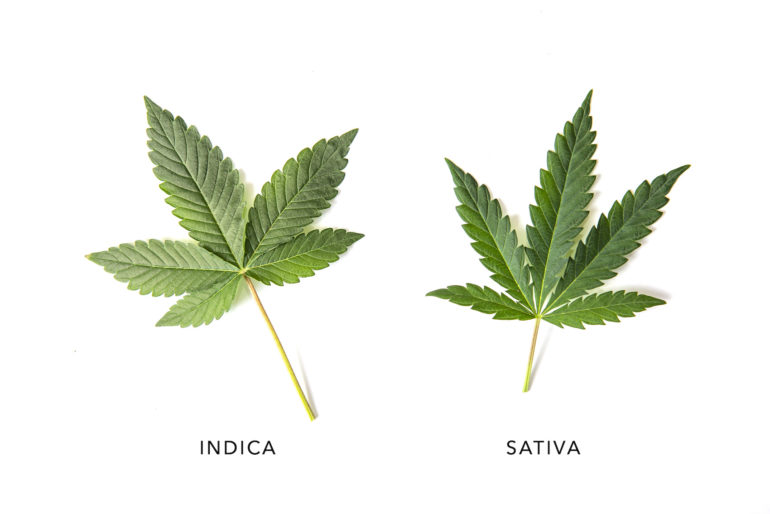Hemp and marijuana. The two terms most people know when describing varieties of cannabis. But did you know there are ways to categorize specific types of cannabis?
The three you may have heard of are Sativa, Indica, and Hybrid. The other is Ruderalis, which is often lesser-known among casual or beginner cannabis users.
These four terms are commonly used to describe and categorize certain “strains” based on their genetics, appearance, cannabinoid profile, terpene profile, benefits, and effects.
A quick glance at Sativa vs Indica vs Ruderalis
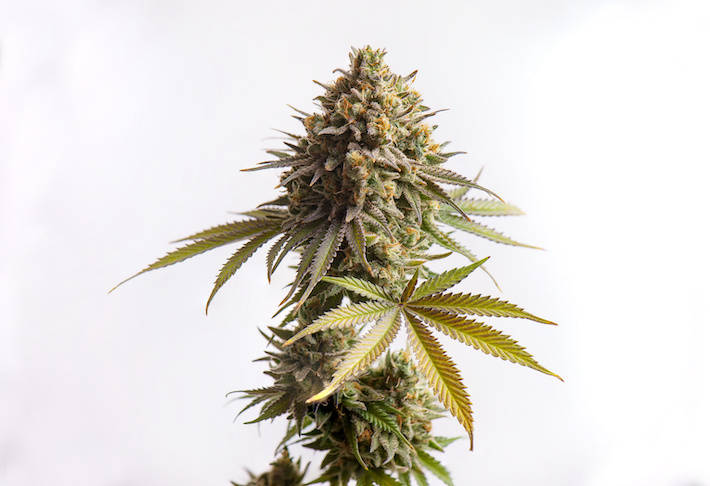
Sativa
- Appearance: Long, spindly, grows up to 6ft tall
- Aroma and flavor: Sweet, mango, floral aroma + sweet, sour, pine flavor (strain dependent)
- CBD + THC (%): CBD = 1-12% (approx), THC = as high as 21-22%
- Common terpenes: Myrcene, limonene, caryophyllene, pinene
- Benefits and effects: Energy, mood, focus, concentration, anti-stress
Indica
- Appearance: Shorter, denser, bushier, 3-5ft tall
- Aroma and flavor: Pungent skunky, earthy, woody aroma + sweet, earthy, fruity aroma (strain dependent)
- CBD + THC (%): CBD = 1-18% (approx), THC = up to 23-25% THC (approx)
- Common terpenes: Pinene, limonene, myrcene, valencene
- Benefits and effects: Sleep, relaxation, sedation, anti-stress, anti-anxiety
Ruderalis
- Appearance: Very short, thick, dense, 1-2 ft tall
- Aroma and flavor: Very little aroma or flavor (lack of terpenes)
- CBD + THC (%): Quite high in CBD, very low in THC
- Common terpenes: N/A
- Benefits and effects: None. Best for auto-flowering Hybrids
Why knowing the difference between Indica, Sativa, and Hybrid is important
As a recreational or medical cannabis user, it’s important for you to know exactly which strains to purchase. There are thousands of different ones out there, each with varying effects and benefits depending on what you’re using them for.
As a medical cannabis user, you may need a specific medical cannabis strain for anxiety, depression, pain, or inflammation. If you’re a recreational cannabis user, you may simply require a cannabis strain for social enjoyment and a good time with your buddies.
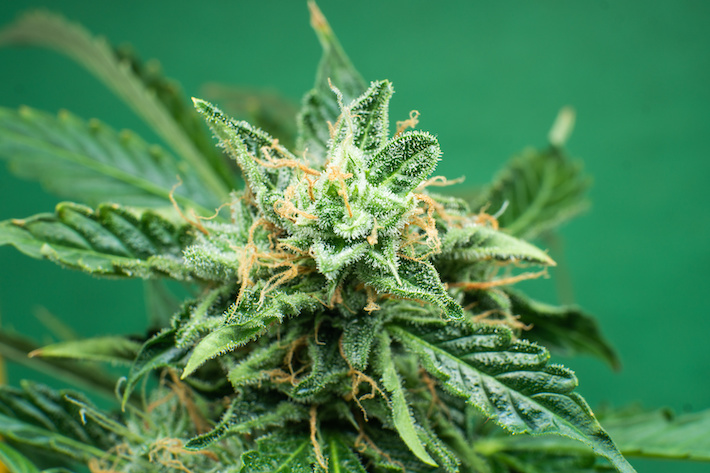
However, if you choose the wrong strain, you’re not going to appreciate the power of cannabis in its fullest form.
Understanding the differences between Sativa, Indica, Hybrid, or Ruderalis strains is the first step to finding the most effective and beneficial strain for your needs.
What is Sativa?
Sativa, known formally as Cannabis sativa L., is one of the most common, widely used cannabis strains, providing you with a wide range of recreational and medicinal benefits. It was first identified by renowned Swedish botanist and taxonomist, Carl Linnaeus, in 1753, though its cultivation and medicinal use began thousands of years prior. Many believe Sativas cause a “head high”, which is generally good for focus, concentration, anxiety, and stress relief.
Appearance
Sativas are long, spindly giants. They commonly grow over six feet high, making them the tallest subspecies of cannabis. This is the result of growing conditions and the environment, which is generally tropical and along equatorial regions where sunlight is routine and consistent. The growth pattern is around 12-16 weeks.
Sativas are also sparse and less dense than Indicas. This allows air to flow adequately through the growing plants, preventing the growth of fungus and other bacteria, especially in more humid climates.
If you look a little closer at a Sativa, you’ll also notice it has anywhere up to 13 long, narrow leaves resembling cutting blades with saw-like edges. The buds are also long and slightly wispy, almost like a dense flame featuring orange and red hues alongside more “traditional” green and brown colors.
Aroma and flavor
The Sativa aroma and flavor are generally more pungent than Indica, though this is entirely strain-dependent. Users report some Sativa strains to have a very strong sweet but also sour flavor with hints of pine and skunk. In terms of aroma, Sativa’s limonene content gives its strains a nice sweet, mango-like smell with some floral notes.
Sativa CBD + THC ratio
Sativas are commonly known to contain much lower doses of CBD but higher quantities of THC, especially when compared with Indica strains. The CBD percentage can be as little as 0.2-1%, while the THC percentage can soar way above 20-22%.
Common terpenes found in Sativa strains
- Pinene
- Limonene
- Myrcene
- Valencene
Sativa strains benefits and effects
Common benefits and effects of Sativa strains are entirely down to which one you choose to consume. As a general rule, Sativa effects induce focus, energy, concentration, mood-enhancement (uplifting), and a general sense of happiness, which is why many users prefer consumption during the day, especially if they have a busy day ahead of them. These effects and benefits are primarily down to the terpenes pinene and limonene. When combined with both CBD and THC, pinene and limonene are quite potent mood-enhancers, possessing anti-anxiety and anti-stress qualities.
What is Indica?
Indica, formerly known as Cannabis indica., is a subspecies of cannabis identified in 1785 by evolutionary biologist John-Baptiste Lamarck. Indicas are native to the harsh, hot, and dry areas of Central Asia, specifically India, Pakistan, and Afghanistan. Indica strains are as popular as Sativas but for different reasons. While Sativa strains are said to cause a “head high”, many Indica strains are thought to induce a “body high”, resulting in relaxation, calm, and relief from insomnia.
Appearance
Indicas are much shorter than Sativas but still taller than Ruderalis strains. They reach up to three to five feet in height with thicker stems and “broader” leaves.
Indica buds also tend to be thicker, bushier, and far denser than Sativa buds, commonly with blue and purple tinges.
Indica growth and maturation time is much shorter than that of Sativa strains, typically taking 6-8 weeks but sometimes longer depending on growing conditions and how well-maintained they are.
Compared to Sativas, Indicas are darker with a color similar to olives.
Aroma and flavor
Indicas have a more pungent aroma than Indicas (generally), but this depends entirely on the strain you choose and which terpenes are involved. Many users report pungent skunky, earthy, and wood-like aromas due to the high myrcene content, though this is entirely strain-dependent
Some other Indicas have a very strong, almost harsh sweet, fruity, and earthy aroma, alongside sharp hints of diesel, spice, and citrus. Generally, Indicas have a distinct flavor that’s somewhat similar to their aroma.
Average Indica CBD + THC ratio
As a general rule, Indicas typically carry a higher percentage of CBD when compared with Sativas, making them a little more balanced. However, this doesn’t mean the percentage of THC is suddenly lower. Many Indica strains can have up to 20-22% THC (sometimes higher).
Common terpenes found in Indica strains
- Myrcene
- Limonene
- Caryophyllene
- Pinene
Indica strains benefits and effects
The common benefits and effects of Indica strains vary depending on which one you choose to consume. Generally, we recommend consuming an Indica strain in the evening, on weekends, or after a stressful day at work. Why? Because many of these strains carry the terpenes myrcene and limonene. Myrcene is thought to be a mild-to-moderate sedative and muscle relaxant, while limonene is known for its anti-stress and anti-anxiety properties. In combination with THC, both these terpenes induce what’s known as a “body high”, which causes a strong sense of calm, balance, relaxation, and sedation, as well as relief from insomnia.
What are Hybrids?
Hybrid strains are a mix of Indicas and Sativas via selective crossbreeding and hybridization. Some breeders also mix Ruderalis strain genetics in there to quicken the growth pattern and boost CBD levels.
Hybrid strains fall into four separate categories:
- Sativa-dominant
- Indica-dominant
- 50/50 Sativa + Indica
- Hybrid Autoflower (combines Ruderalis with Sativa or Indica or both)
Appearance
The appearance of a Hybrid strain is dependent on which parent Indica, Sativa, and Ruderalis strains have been cross-bred and hybridized. Indica-dominant strains will, of course, have more Indica characteristics, while Sativa-dominant strains will have more Sativa characteristics.
Aroma and flavor
The aroma and flavor of a Hybrid strain are down to which parent Indica, Sativa, and Ruderalis strains have been combined and cross-bred. An Indica-dominant Hybrid generally has a skunkier, woodier, and spicier flavor, while a Sativa-dominant Hybrid has an earthy flavor.
Average Hybrid CBD + THC percentages
The CBD + THC percentages present in Hybrid strains vary, no matter whether it’s Indica-dominant, Sativa-dominant, or 50/50. Some strains may consist of 5% CBD and 18% THC, while others may carry 2% CBD and 22% THC. You can also find strains with more of a balanced 1:1 CBD + THC percentage ratio e.g. 10% CBD and 16% THC.
Common terpenes found in Hybrids
The common terpenes found in Hybrid strains depend on which parent Indica or Sativa strains are cross-bred and hybridized.
Hybrid strains benefits and effects
Hybrid strain benefits and effects are totally down to which type it is. If it’s a Sativa-dominant strain, you’ll likely experience mood-enhancement, energy, focus, anti-anxiety, and anti-inflammatory benefits. If it’s an Indica-dominant strain, you’re more likely to experience sedation and relaxation (in general).
What is Ruderalis?
Ruderalis is a strong, robust subspecies of cannabis commonly found growing across many parts of Central Asia, Russia, and Siberia. Many believe Ruderalis is the “lesser” subspecies due to yielding low quantities of THC and other valuable plant compounds. It’s rarely used on its own for recreational and medicinal purposes. Instead, breeders crossbreed Ruderalis with Sativas and Indicas to create Hybrids. Why? Because they possess one capability no other subspecies possess: auto-flowering.
Appearance
Ruderalis strains are very short and stumpy. They grow no taller than 1-2 ft tall. The leaves have a thickness similar to Indica. Each leaf has three blade-like fingers. Its buds are also quite dense but moderately sized, which are supported on noticeably thick stems. The stalks are comparably thinner and very fibrous, making them incredibly tough, robust, and durable.
Aroma and flavor
Ruderalis strains have a naturally low terpene profile, resulting in very little flavor and aroma. In fact, if you smoke a Ruderalis strain, the flavor and aroma are neutral compared to Sativa, Indica, and Hybrid strains.
Average Ruderalis CBD + THC percentages
Despite having little-to-no THC and carrying very few terpenes, the quantity of CBD is surprisingly high. In some Ruderalis strains, you can find approximately 18-22% CBD, which is actually very similar to hemp.
Ruderalis strains benefits and effects
Pure Ruderalis strains have very few recreational or medicinal benefits and effects and should be avoided if you’re looking to purchase cannabis for health and wellness.
The auto-flowering capabilities of Ruderalis for Hybrid strains
Despite Ruderalis strains providing very little in the way of recreational and medicinal benefits, they do possess one thing no other variety of cannabis does: auto-flowering capabilities.
Auto-flowering (day-neutral cannabis) refers to the automatic flowering of cannabis buds without relying on sunlight. Instead, flowering relies solely on time. Most auto-flowering strains (Ruderalis or otherwise) grow very quickly compared with Sativa and Indica strains (7-10 weeks), which is why breeders and growers combine Ruderalis genetics with Sativa and Indica to create quick growing Hybrid strains.
What are landrace cannabis strains?
Landrace strains are the original genetic jackhammers responsible for all the Hybrid strains you see today. Grown in and adapted to their native land over thousands of years with little-to-no human manipulation, many see landrace strains as the purest cannabis strains. Regions where you find landrace strains include the mountainous regions of Pakistan (Hindu Kush) or the dry areas of South Africa (Durban Poison).
What are heirloom cannabis strains?
Heirloom strains are landrace strain seeds taken from their native land and grown elsewhere e.g. Hindu Kush seeds taken from Pakistan and grown in the USA. Heirloom strains will not be exposed to genetic manipulation, cross-breeding, or hybridization in any way.
Is hemp a subspecies of cannabis?
No. Hemp isn’t defined as a subspecies of cannabis. It’s a specially-grown high-CBD variety of Sativa carrying no more than the legal limit of 0.3% THC (by dry weight). If the THC content is above 0.3% THC, it’s automatically classified as “high THC” marijuana and deemed federally illegal under Schedule I of the Controlled Substances Act (CSA).
Choosing the right cannabis strain (there’s more to it than you think)
Choosing your perfect cannabis strain isn’t as easy as you think. There are hundreds of different ones, all with different benefits, effects, and genetic characteristics.
In fact, because there are so many cannabis strains out there, grouping them together under four broad umbrella terms simply isn’t accurate enough. There are many variables determining how cannabis strains will work within your body on a physiological level.
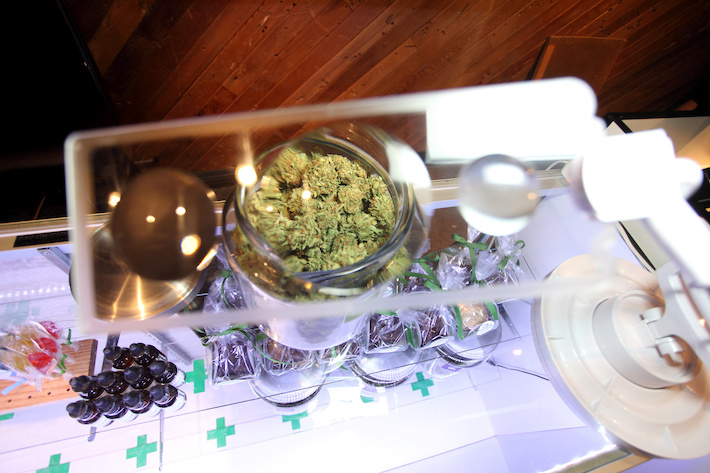
The most important variable to look for when purchasing a cannabis strain (regardless of whether it’s an Indica, Sativa, Ruderalis, or Hybrid) are the all-important cannabinoids and terpenes — the lifeblood of cannabis.
Cannabinoids and terpenes are essential when choosing a cannabis strain
Knowing which cannabinoids and terpenes are in your cannabis strain is essential, particularly if you need specific ones for your recreational or medicinal requirements.
Important cannabinoids to consider:
- Cannabidiol (CBD)
- Tetrahydrocannabinol (THC)
- Cannabinol (CBN)
- Cannabigerol (CBG)
- Delta-8-tetrahydrocannabinol (delta-8-THC)
Important terpenes to consider:
- Beta-caryophyllene
- Limonene
- Linalool
- Myrcene
These cannabinoids and terpenes are thought to work together synergistically in your body via the endocannabinoid system (ECS), a phenomenon commonly referred to as the entourage effect.
This synergistic phenomenon can be triggered through smoking cannabis joints, eating cannabis edibles, and consuming cannabis oils orally or sublingually (among many other methods).
How do cannabinoids and terpenes interact with your endocannabinoid system?
Cannabinoids and terpenes interact with your endocannabinoid system and other physiological functions. The way this works is complex but uniquely special.
When you consume cannabis products, each and every cannabinoid and terpene present in your cannabis strain or product flow through your bloodstream, attaching themselves to a special class of receptors known as cannabinoid receptors.
The two main cannabinoid receptors are cannabinoid 1 (CB1) and cannabinoid 2 (CB2). Certain cannabinoids (THC, delta-8-THC) bind directly with these receptors, while others (CBD, CBG) interact in a less direct manner.
Some terpenes (linalool, humulene) also show activity at your cannabinoid receptors.
What happens when CBD and THC interact with your endocannabinoid system and its receptors?
THC binds to CB1 receptors located all throughout your brain. This not only causes a euphoric “high” but may also alleviate symptoms of pain, pain perception, muscle spasticity, nausea, vomiting, and glaucoma.
CBD, on the other hand, has very little affinity with CB1 or CB2 receptors. Instead, it acts as an allosteric modulator of CB1 receptors, meaning it changes their shape and reportedly reduces negative THC effects. This reduction is thought to balance out a euphoric high, resulting in a more enjoyable cannabis experience.
CBD is also said to act at other receptor sites separate from the endocannabinoid system. The two most recognized receptor sites CBD activates are serotonin (for anxiety relief) and vanilloid (for pain relief).
Do terpenes act the same way?
It’s currently unknown whether cannabis terpenes are similar to cannabinoids insofar as endocannabinoid system and cannabinoid receptor activity. There are some researchers who believe terpenes have very little affinity with cannabinoid receptors, while there are others who do.
The best cannabis strains to consider purchasing
If you’re still totally stuck on which cannabis type or strain to purchase, we have a couple of recommendations for you. We’ve chosen three of the best Sativa, Indica, and Hybrid cannabis strains for you to try. Some are suited to beginners, while others are better for experienced cannabis users. Why? The beginner strains have a higher quantity of CBD vs THC, whereas the strains for more experienced users have a higher THC content.
The top Sativa strains
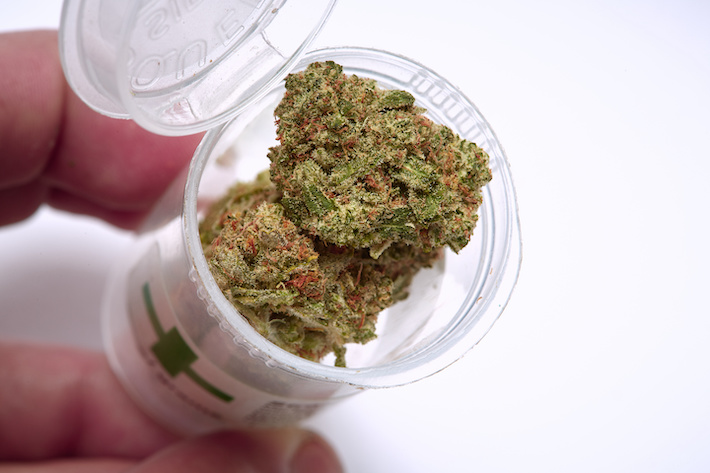
Sour Diesel
Sour Diesel (often shortened to Sour D.) is one of the most popular Sativa strains out there. It’s known for its pungent diesel smell, alongside skunky, citrusy aromas. Flavor-wise, it’s one of the best and definitely one of our favorites. You’ll notice a strong hint of spice with subtle sour undertones.
Sour Diesel CBD + THC percentages
- CBD: 2-4%
- THC: 20-26%
Common terpenes in Sour Diesel
- Caryophyllene
- Myrcene
- Limonene
Sour Diesel is good for:
- Energy
- Mood-enhancement
- Anxiety
- Depression
- Social events
Amnesia Haze
Amnesia Haze is another very popular Sativa strain and one you won’t forget in a hurry. It has a very earthy but also citrusy flavor with a few surprise notes of spice and haze. The aroma is very similar to the flavor. It’s quite pungent but not overwhelming.
Amnesia Haze CBD + THC percentages
- CBD: 1-2%
- THC: 20-24%
Common terpenes in Amnesia Haze
- Caryophyllene
- Myrcene
- Humulene
Amnesia Haze is good for
- Mood-enhancement
- Anxiety
- Depression
- Energy
- Focus
- Social events
Harlequin
Harlequin is a different kind of Sativa. It’s closer to consuming hemp than marijuana. It doesn’t induce a strong high. The taste is earthy and sweet with hints of mango. It’s certainly not as pungent as the aforementioned strains. We recommend a Harlequin strain if you’re a beginner wanting to try Sativa strains for the first time.
Harlequin CBD + THC percentages
- CBD: 12-15%
- THC: 4-8%
Common terpenes in Harlequin
- Myrcene
- Pinene
- Caryophyllene
Harlequin is good for
- Pain
- Inflammation
- Relaxation
- Anxiety + fear
The top Indica strains
Granddaddy Purple
Granddaddy Purple CBD + THC percentage
- CBD: 21-28%
- THC: 1-3%
Common terpenes in Grandaddy Purple
- Linalool
- Myrcene
- Humulene
- Caryophyllene
- Ocimene
Granddaddy Purple is good for
- Sleep + insomnia
- Relaxation
- Pain relief
- Inflammation
Bubba Kush
Bubba Kush is another notorious Indica strain. It has a very strong earthy, nutty taste with some noticeable hints of sweetness without being too sickly. The flavor is equally as strong. When smoked, the aroma has a slight chocolatey smell to it. We recommend Bubba Kush to all experienced users. Beginners should be aware of the high THC content, which can cause negative side effects.
Bubba Kush CBD + THC percentages
- CBD: 0-1%
- THC: 14-18%
Common terpenes in Bubba Kush
- Caryophyllene
- Limonene
- Myrcene
- Alpha-Bisabolol
Bubba Kush is good for
- Pain
- Inflammation
- Sleep + insomnia
- Relaxation
- Eating disorders
Northern Lights
Northern Lights CBD + THC percentages
- CBD: 0-1%
- THC: 14-18%
Common terpenes in Northern Lights
- Caryophyllene
- Myrcene
- Pinene
Northern Lights is good for
- Pain
- Stress
- Sleep problems + insomnia
- Relaxation
